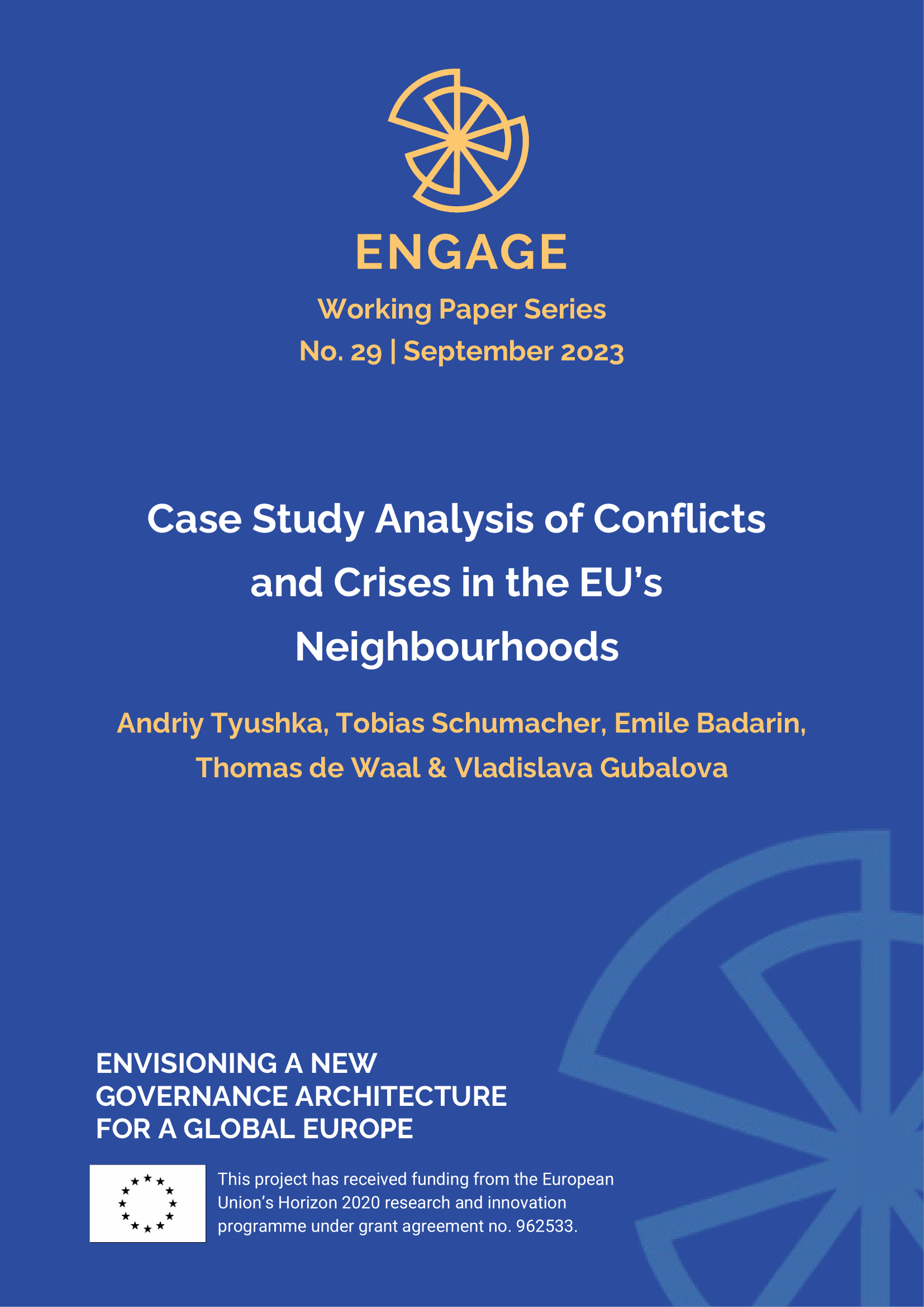Case Study Analysis of Conflicts and Crises in the EU’s Neighbourhoods
Andriy Tyushka, Tobias Schumacher, Emile Badarin, Thomas de Waal & Vladislava Gubalova
This working paper probes four distinct – most diverse – cases of the EU’s engagement in crisis and conflict situations in its immediate neighbourhood, that is, countries encompassed in the European Neighbourhood Policy (ENP) framework. These cases are: the Israel-Palestine and Armenia-Azerbaijan protracted conflicts, and the more recent and cascading (crisis-to-war) conflicts in Libya and Ukraine, with particular attention to the ongoing stage of Russia’s full-scale military invasion of Ukraine. Drawing on previous work within the ENGAGE project, the current four case studies follow a goal-oriented framework of analysis, aiming to uncover the rationales, scope and forms, as well as effects of the EU’s engagement in given crisis and conflict situations over the past three decades.
The empirical evidence from these most diverse crisis/conflict situations (crises versus conflicts, protracted versus recent conflicts, conflicts between EU neighbours and those involving third powers, the level of institutionalisation of the EU’s bilateral relationship with the countries, etc.) suggests that the EU’s engagement – whether in terms of its scope, form or commitment – has largely been selective and driven by factors such as a crisis’ or conflict’s proximity, severity, and salience for the EU’s own security and/or stability. The patterns of EU engagement in crisis management and conflict resolution show certain similarities with regard to the choice of tools from the EU’s crisis/conflict response repertoire. However, both the varied strategic and operational extent of such tools, as well as their occasional and offbeat amplification through further (existing or newly created, including both legally and politically creative) formats of EU and joined-up (with Member States) engagement strongly point to an inherent selectivity. Constraining opportunity structures only reinforced selective EU crisis/war responses.
The coherence and sustainability dimensions of the EU’s engagement have thus been beset with similar issues and challenges across the four cases analysed, with Ukraine’s case presenting – particularly since February 24, 2022 and for now – a positive and promising exception. The case of the EU’s response to Russia’s escalating war in Ukraine also appears tentatively promising with regard to the anticipated effects of EU engagement, especially if contrasted with the Union’s previous trajectory of crisis/conflict response before 2022 or its even more problematic – in terms of effectiveness– engagement in other three cases.


